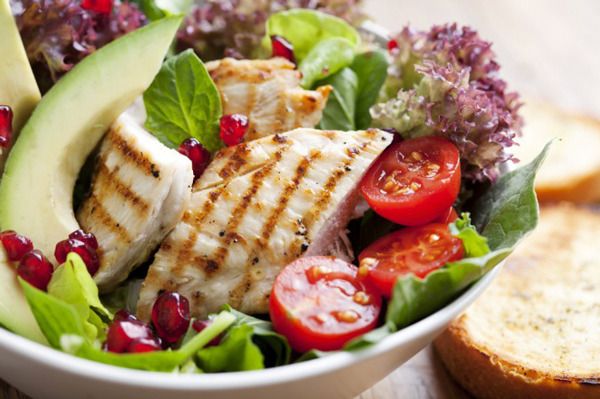Salads are most people’s first encounter with raw foods. Quick and easy to make, they are an easy and delicious way to get live, biodynamic foods into your diet. Mistakes abound however, that could turn an otherwise healthy meal into something less than ideal.

Credit: The Epoch Times
As noted by nutrition editor Cynthia Sass in a recent article for Time Magazine, “imbalances can either prevent a salad from being slimming, or lead to missing out on key nutrients.”
She points out five common salad mistakes that many people make. These are certainly valuable pointers. Here, I will address a couple of them, and make some additional recommendations of my own.
- Too little or too much protein
- Insufficient variety in your choice of greens
- Too little or too much fat
- Skipping starch
- Insufficient seasoning
Whenever Possible, Opt for Organic Produce
Fresh organic vegetables are generally both healthier and tastier. In terms of nutrition, it’s important to remember that it’s not just about the nutrient levels themselves, which do tend to be higher in organically grown foods, it’s also about what they don’t contain, namely pesticides.
Most of us significantly underestimate the amount and variety of chemicals sprayed onto the produce we eat. Tests, however, suggest most people are exposed to hundreds of them, and they accumulate in your body over time.
They can also easily be transferred to your unborn child during pregnancy. In 2009, the Environmental Working Group (EWG) published a study that found 232 chemicals in the placental cord blood of American newborns!

Credit: My Organic Tot
Organophosphate pesticides, which are commonly used on conventionally-grown produce, are well known for their hazards to human health. Prenatal exposure has been linked to delayed brain development, reduced IQ, and attention deficits.
I’ve also pointed out the compelling links between agricultural chemicals and autism, and new research (known as the CHARGE study) shows that living within a mile of pesticide-treated crops increases your chances of bearing children with autism.
The recently published CHAMACOS Study, which followed hundreds of pregnant women living in the agricultural mecca of Salinas Valley, California, also found that exposure to organophosphates during pregnancy was associated with lower IQ and poorer cognitive functioning in children, among other health effects.
Glyphosate, another prevalent herbicide used both on conventional and genetically engineered crops at about one billion pounds a year, may be one of the most important factors in the development of multiple chronic diseases and conditions that have become prevalent in Westernized societies. The more of it you can avoid, the better.
Homegrown Sprouts Can Maximize the Nutrition of Your Salad
One of the simplest and most effective strategies to avoid harmful chemicals is to eat organic food. Another option is to grow your own. Among the easiest foods to grow at home are sprouts. As luck would have it, they’re also among the most nutritious, and they’re an excellent addition to a fresh salad.

Credit: The Epoch Times
Some of the most commonly sprouted beans, nuts, seeds, and grains are listed below. My personal favorites are pea and sunflower sprouts, which have the added benefit of providing some of the highest-quality protein you can eat.
Homegrown sprouts have radically improved the nutrition of my own primary meal, which is a salad at lunch. They’re also a perfect complement to fermented vegetables. It is hard to imagine a healthier combination that provides the essentials of nutrition, and at a very low cost.
- Broccoli: known to have anti-cancer properties, courtesy of the enzyme “sulforaphane“
- Alfalfa: a significant dietary source of phytoestrogens. Also a good source of vitamins A, B, C, D, E, F, and K
- Wheat grass: high in vitamins B, C, E, and many minerals
- Mung bean: good source of protein, fiber, and vitamins C and A
- Clover: significant source of isoflavones
- Lentil sprouts: contain 26 percent protein, and can be eaten without cooking
- Sunflower: contains minerals, healthy fats, essential fatty acids, fiber, and phytosterols. It’s also one of the highest in protein
- Pea shoots: good source of vitamins A and C and folic acid and one of the highest in protein
Read more at The Epoch Times.